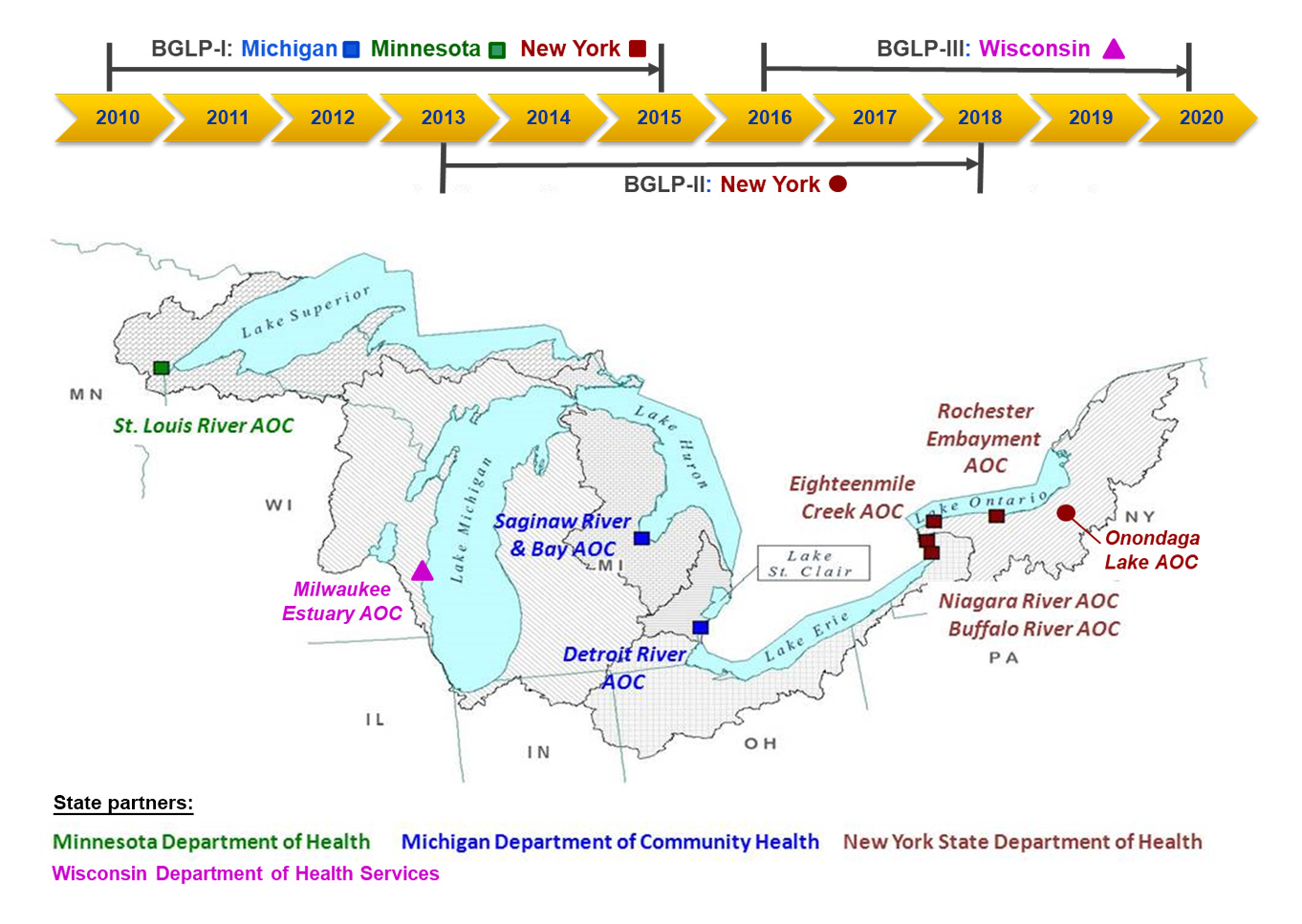Program Description
The BGLP program consists of a series of cross-sectional studies carried out collaboratively with state health departments that are funded via cooperative agreement programs. The first two programs, BGLP-I (2010-2015) and BGLP-II (2013-2018), were conducted in collaboration with state health departments in Michigan, Minnesota, and New York and targeted six populations near eight Areas of Concern (AOCs). Results from these two programs indicated that some target populations had a higher body burden of heavy metals and persistent organic pollutants compared to national estimates. The final program, BGLP-III, was completed in June 2020 in collaboration with the Wisconsin Department of Health Services (Figure 1).

Figure 1. Biomonitoring of Great Lakes Populations (BGLP) I-III Programs: Collaborators, Locations, and Timeline.
The BGLP program targets vulnerable populations, including shoreline anglers, sport anglers, immigrants, and tribal communities. These groups of people may eat more local fish, aquatic plants, and wildlife than the general population, either as an inexpensive source of food or as a cultural custom. A list of core legacy contaminants reported in the Great Lakes region were measured in all participants:
- Mercury
- Lead
- MIREX
- Hexachlorobenzene
- Dichlorodiphenyltrichloroethane/dichlorodiphenyldichloroethylene (DDT/DDE)
- Polychlorinated biphenyls (PCBs)
In addition, some chemicals of emerging concern that are found in the Great Lakes were measured in several studies:
- Per- and polyfluoroalkyl substances (PFAS)
- Polybrominated diphenyl ethers (PBDEs)
- Bisphenol A (BPA)
- Toxaphene
The purpose of the BGLP program is to assess exposure to priority legacy contaminants and emerging contaminants of concern in susceptible subpopulations throughout the Great Lakes Basin who are at high risk of exposure.
The program’s objectives are:
- To assess body burdens of priority and emerging contaminants in the Great Lakes ecosystem, particularly among residents at high exposure risk.
- To assess unique baseline exposure information in susceptible populations at the onset of GLRI restoration activities
- To use biomonitoring data to inform health officials and help guide public health actions throughout the restoration process
- To reduce exposure and protect populations who are at increased exposure risk to Great Lakes contaminants